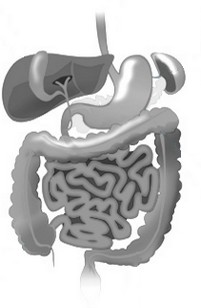Anal fistulas
 Definition
Definition
Anal fistula is caused by the infection of a small gland (called the Hermann and Desfosses gland) inside the anus, which creates a communication - a "tunnel" - between it and the skin of the perianal region, inside the rectum or sphincter. This infection will therefore cause an abscess, which will not heal and through which a purulent liquid will flow.
Epidemiological data
Anal fistulas are not caused by a poor lifestyle or a type of diet ... Anyone can suffer from them, but certain pathologies - especially Crohn's disease - can promote their appearance.
Symptoms of the disease
Fistula is manifested by :
• an abscess and a purulent discharge ;
• bleeding ;
• itching of the anus and skin irritation around the anus, including swelling or redness ;
• pain that occurs when stool is released ;
• sometimes stool passes through the fistula.
Treatments
If fistula is detected very early, a simple incision of the abscess may be recommended. In some cases, it is also possible to inject glue into the fistula and stitch the hole. This process, which is painless, does not guarantee long-term results. However, in the vast majority of cases, surgical intervention (under general or local anaesthesia) is required.